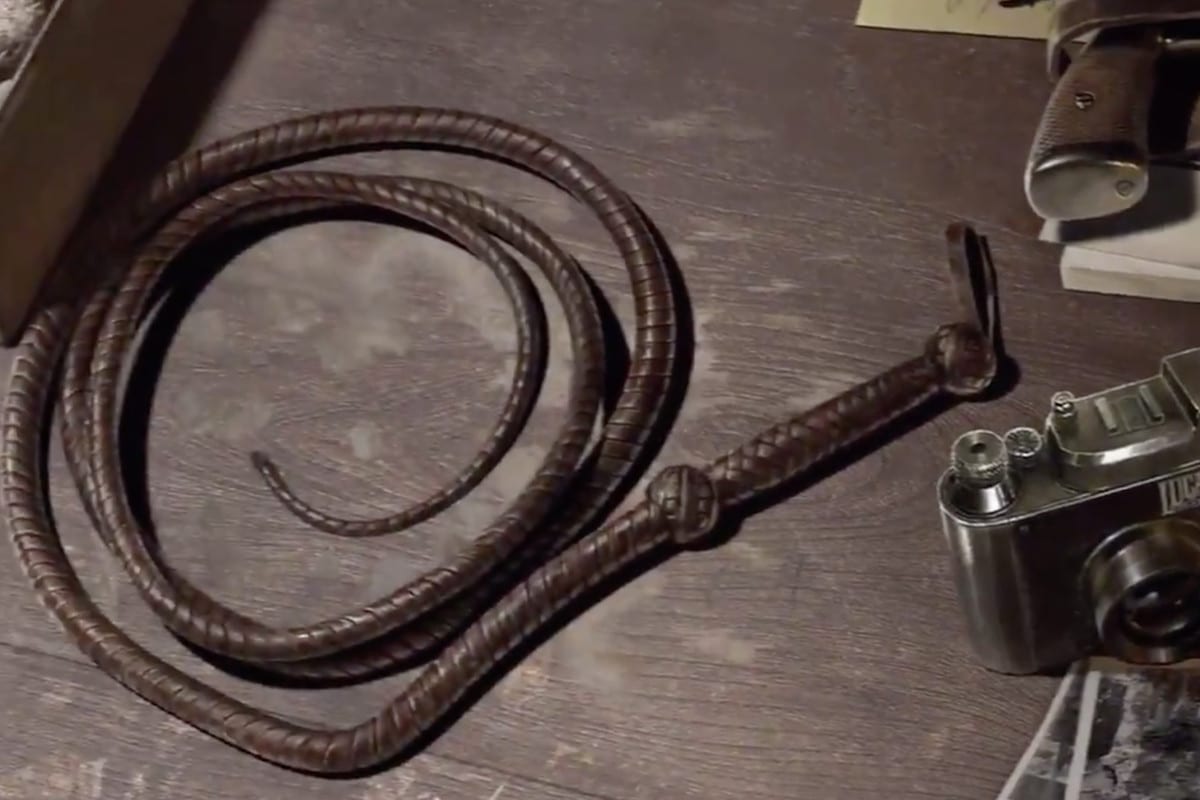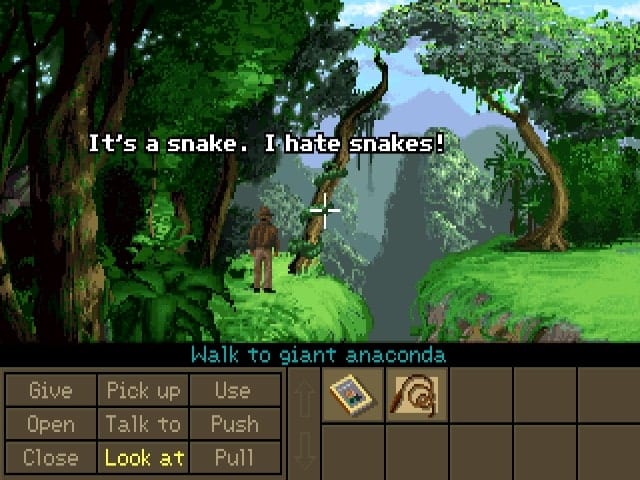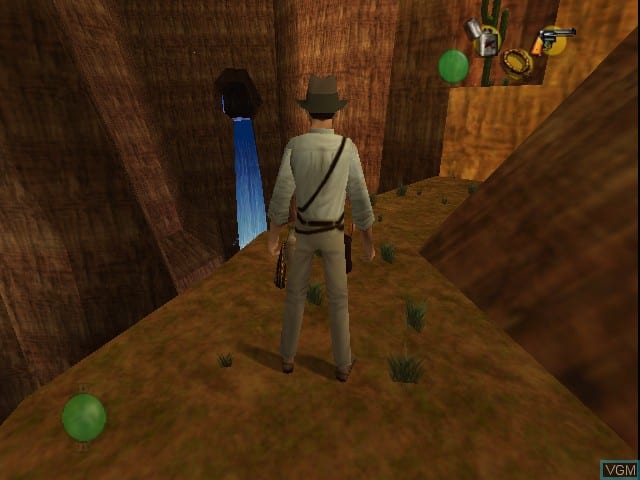Since his debut in 1981’s Raiders of the Lost Ark, Indiana Jones has been a staple of the pop-culture world. As is always the case with a popular franchise, Indiana Jones saw his fair share of spin-offs (The Young Indiana Jones Chronicles) and sequels – not all of them hitting the same mark as the original film.
But there is one area in which Indy has never really hit the mark: video games. With the recent announcement of Bethesda’s MachineGames working on a brand-new Indiana Jones title slated for release in the next few years, there has never been a better time to reflect upon Indy‘s previous roles in the video game landscape.
*A quick disclaimer: to keep this account brief, I’ve had to leave out the two LEGO Indiana Jones games, but they are definitely worth checking out if you haven’t played them before.
The Adventure Begins
Just one year after the global phenomenon that was Raiders of the Lost Ark, Indy featured in his first ever video game: Raiders of the Lost Ark, developed by Atari and Midway Games for the Atari 2600. According to critics of the time, the gameplay was just as unoriginal as the game’s title, with many of its mechanics being shallow imitations of a fellow Atari 2600 game by the name of Pitfall!. Raiders of the Lost Ark on the Atari 2600 also suffered from a lot of the same problems that plagued the infamous E.T. game that released just a month after — graphical issues, a severe lack of in-game plot, and unclear objectives left players mindlessly wandering the game’s blocky backgrounds.
In 1984, the film Indiana Jones and the Temple of Doom was released, bringing with it one notable video game tie-in. Following on from the tradition set by Atari and Midway, Temple of Doom’s game was simply called Indiana Jones and the Temple of Doom. This 1985 title began as an arcade cabinet that gave players a chance to fight through the Thuggee mines and save kidnapped children in a side-scrolling action game.
The game was then ported to various consoles with varying results. The NES version came out in 1988 and was generally panned by critics for having unresponsive controls and an unfair difficulty spike. On the other hand, the ZX Spectrum, Atari ST, and Amstrad CPC versions of the game were met with generally favourable reviews that highlighted the game’s faithful score and re-playability.
After a few poor puzzle games and text adventures, Indiana Jones returned to the gaming scene in 1989 with the title Indiana Jones and the Last Crusade: The Action Game. While the game itself received middling-to-positive reviews, this entry is particularly notable as it was the first Indy game made by LucasArts, the company that went on to create practically every Indiana Jones title after 1989.
Point-And-Whip
In the decade following their initial foray into the world of Indiana Jones, one main game genre defined both LucasArts and the Indiana Jones game titles: point-and-click adventure. Starting with Indiana Jones and the Last Crusade: The Graphic Adventure in 1989, LucasArts began to strike gold with the Indy license. It seemed as though the point-and-click genre was the perfect fit for an Indiana Jones tie-in game, and with LucasArts’ experience in this department (having worked on hits like Labyrinth and The Secret of Monkey Island), this seemed like the obvious way forward.
This notion was fully cemented when LucasArts released Indiana Jones and the Fate of Atlantis for the PC, Commodore 64, and Atari ST in 1992 to extreme critical and commercial acclaim. The game’s graphics, writing, and audio design were praised by practically every outlet with many critics exclaiming that this was, by far, one of the best graphic adventure games of all time. Fate of Atlantis is still widely considered to be the best Indiana Jones video game adaptation, with both Steam and GOG re-releasing it a few years ago to widespread fanfare.
Opening The Ark
By 1999, 3D gaming had reared its head and quickly became the go-to style for any Triple-A game. To put it simply, if you wanted your game to sell then you needed to make it 3D. LucasArts’ traditional point-and-click formula just wouldn’t cut it this time. Enter Indiana Jones and the Infernal Machine, LucasArts’ first attempt at a 3D Indy game. Developed for the PC and Nintendo 64, Infernal Machine aimed to imitate the visceral action and thrilling adventure found within Spielberg’s movies and, according to critics of the time, it actually came quite close. Infernal Machine garnered scores averaging around the 7/10 mark with many critics pointing to the game’s unique and compelling story as its main asset. Infernal Machine was far from perfect though, with some reviews drawing attention to the clunky controls and the unresponsive combat.
While Infernal Machine didn’t quite live up to many fans’ expectations, it did lay the foundations for LucasArts’ next 3D Indiana Jones action-adventure game: Indiana Jones and the Emperor’s Tomb. Emperor’s Tomb released in 2003 for Xbox, PS2, and PC. It built upon the prior entry in the series in a number of ways; the combat was re-worked, giving Indy some hard-hitting combos and making the gunplay feel a bit more substantial than in Infernal Machine; the atmosphere of the game was also massively commended, with reviews citing that the game makes you feel as though you are playing through a big Hollywood action movie thanks to the numerous set-pieces, boss-like encounters, and spacious level design. But, again, the game couldn’t push past an average score of around 7/10.
A Light At the End of the Rat-Infested Tunnel
LucasArts’ Indiana Jones story came to an end in 2009 with the lukewarm release of Indiana Jones and the Staff of Kings, a DS, PSP, PS2, and Wii game that fell flat in almost every regard, seemingly acting as a step back for the franchise as a whole.
That’s where the franchise currently lies, floating in a sea of good point-and-clicks and mediocre action-adventures. But with Bethesda now hard-at-work on a new Indy game, who knows where this adventure could go next?
Words by Cameron Swan
Support The Indiependent
We’re trying to raise £200 a month to help cover our operational costs. This includes our ‘Writer of the Month’ awards, where we recognise the amazing work produced by our contributor team. If you’ve enjoyed reading our site, we’d really appreciate it if you could donate to The Indiependent. Whether you can give £1 or £10, you’d be making a huge difference to our small team.




